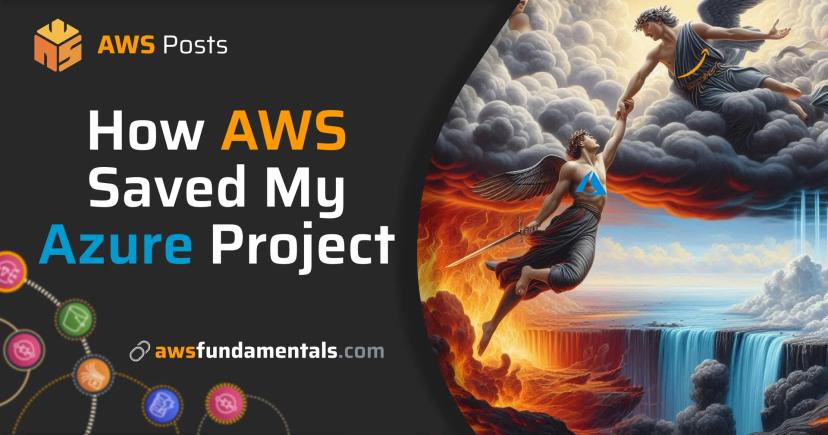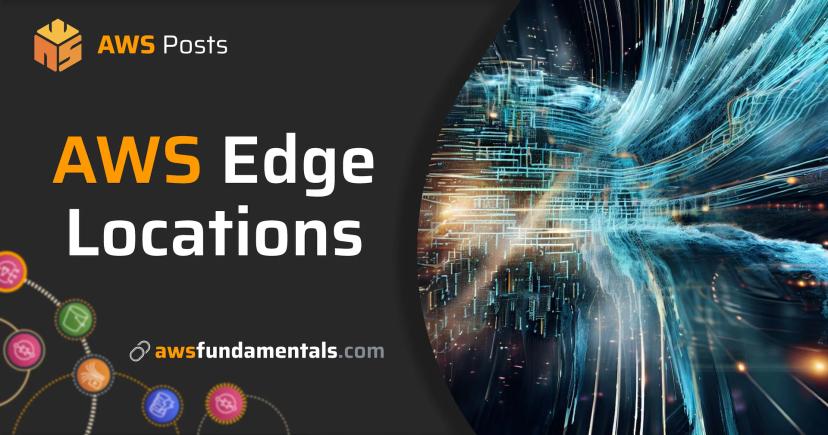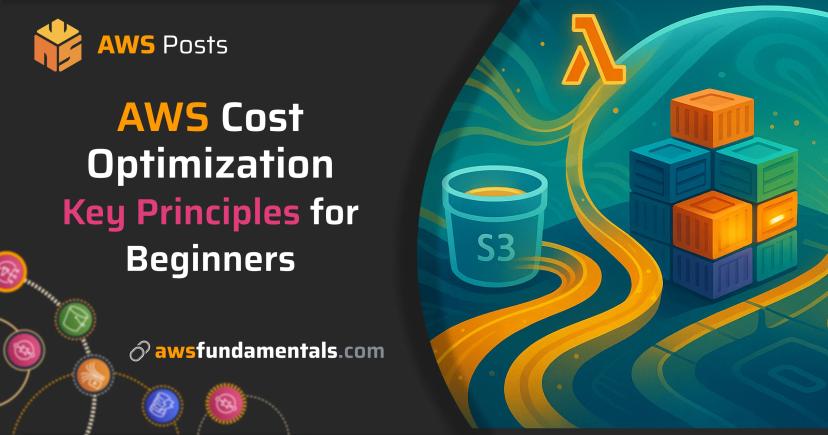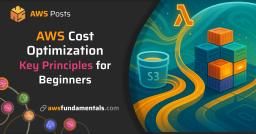
Table of Contents
Jump to a section
Introduction
Let's be honest: debugging CloudFront or Lambda@Edge functions is still a pain. Even in 2025, you'll need to wait for deployments to finish. If you've made the slightest mistake, your function will probably break your whole deployment.
With LocalStack, this changes. You can build, test, and debug your Lambda@Edge functions locally!
In this blog post, we'll look at how to do this.

AWS Lambda on One Page (No Fluff)
Skip the 300-page docs. Our Lambda cheat sheet covers everything from cold starts to concurrency limits - the stuff we actually use daily.
HD quality, print-friendly. Stick it next to your desk.
LocalStack Setup
Getting started with LocalStack is easy. We just need to install the LocalStack CLI.
On macOS, you can install it using Homebrew:
brew install localstack/tap/localstack-cli
The tutorials for other operating systems can be found on the official documentation.
After the installation, let's check if LocalStack is running:
localstack --version
LocalStack CLI 4.4.0
If you see something like this, you're good to go! Let's start LocalStack:
localstack start
Info: You can also run LocalStack in detached mode by adding the
-dflag:localstack start -d. This will start LocalStack in the background, allowing you to continue using your terminal for other commands.
This will pull the latest docker image and start LocalStack.

LocalStack will print a Ready message and you can access the dashboard via app.localstack.cloud.
We'll need to create an account to use the dashboard. Fortunately, LocalStack is free to use and you can sign up via your existing GitHub account in a few seconds.
Afterwards, let's continue with the set up by clicking on the Getting Started link in the navigation bar.
This will take us to the page where we can find our Auth Token that we need to export.

We can now export the Auth Token:
export LOCALSTACK_AUTH_TOKEN=<your-auth-token>
This will set the Auth Token for LocalStack.
At best, you should add this to your .bashrc or .zshrc file to have it automatically set when you open a new terminal.
Upgrading our License to the Base Plan
For using CloudFront, we need to upgrade our license to the base plan. Only certain services are required to be on a paid plan. Generally, LocalStack is free to use for most AWS services.
Let's jump to the pricing page of LocalStack and click on the Base plan.
Afterwards, just click on the confirmation button to get our license upgraded.
Don't worry: the Base Plan can be tested for 14 days for free! We don't even need to provide our credit card information.
Please restart LocalStack after adding your Auth Token and upgrading your license.
Afterwards, you should also see that your local instance is running the dashboard!

Using the LocalStack CLI
Now we're ready to use the LocalStack CLI.
It's a powerful tool that allows us to manage our LocalStack resources. Before we jump into our Lambda@Edge functions, let's create a simple S3 bucket first. Just to get into the vibe of LocalStack.
Let's create a bucket:
aws s3 mb s3://cloudfront-origin-bucket --endpoint-url=http://localhost:4566
Instead of sending the command to the real AWS API, it will be redirected to our locally running LocalStack instance.
In the terminal window where LocalStack is running, you should see something like this:
2025-05-10T13:11:53.934 INFO --- [et.reactor-0] localstack.request.aws : AWS s3.CreateBucket => 200This means that the bucket was created successfully.
Let's list our buckets to verify that:
aws s3 ls --endpoint-url=http://localhost:4566
2025-05-10 15:11:53 cloudfront-origin-bucket
Yay, our setup works as expected and our bucket is listed!
You can also install awscli-local to have a shorter command to interact with LocalStack.
brew install awscli-local
This will install the awslocal command and set the endpoint to the LocalStack instance.
awslocal s3 ls
This will list our buckets as expected - no need to pass the specific endpoint anymore.
Creating a Lambda@Edge Function
Before we want to create our CloudFront distribution, we need to create our Lambda function first. Let's create one via the CLI.
What do we need for this?
- A trust policy that allows Lambda and Lambda@Edge to assume the role
- A role that will be used by the function
- The handler code that will be executed when the function is invoked
- The function itself with our attached policy and role
Let's start with the trust policy.
echo '
{
"Version": "2012-10-17",
"Statement": [
{
"Effect": "Allow",
"Principal": {
"Service": [
"lambda.amazonaws.com",
"edgelambda.amazonaws.com"
]
},
"Action": "sts:AssumeRole"
}
]
}
' > trust-policy.json
Next, we'll create the role that will be used by the function.
We'll also attach the AWSLambdaBasicExecutionRole to the role.
awslocal iam create-role \
--role-name cloudfront-edge-function-role \
--assume-role-policy-document file://trust-policy.json
awslocal iam attach-role-policy \
--role-name cloudfront-edge-function-role \
--policy-arn arn:aws:iam::aws:policy/service-role/AWSLambdaBasicExecutionRole
Now we can put our handler code into a file.
echo 'exports.handler = async (event) => {
if (event?.Records?.[0]?.cf?.request) {
const request = event.Records[0].cf.request;
console.log(request);
return request;
}
return {
statusCode: 200,
body: JSON.stringify(`Hello, World!`),
};
};' > handler.js
If the request originates from CloudFront, the event.Records[0].cf.request will be present.
In this case, we need to return the request because else we'll get an error from CloudFront.
That's just the starting point - we'll modify it later to do something useful.
If it's any other invocation, we'll simply return a HTTP 200 and a static message.
Great! Now we can actually create the function. Before that, we need to zip our handler file.
zip function.zip handler.js
awslocal lambda create-function \
--function-name cloudfront-edge-function \
--runtime nodejs22.x \
--role arn:aws:iam::000000000000:role/cloudfront-edge-function-role \
--handler handler.handler \
--zip-file fileb://function.zip
This will create the function and print the whole configuration in the response. At best you'll already copy the ARN from the response as we'll need it later on.
Let's test our function by invoking it.
awslocal lambda invoke --function-name cloudfront-edge-function \
--cli-binary-format raw-in-base64-out \
--payload '{"body": "{\"num1\": \"10\", \"num2\": \"10\"}" }' output.json
This will invoke the function and print the response in the output.json file.
Let's use cat and jq to print the content of the file:
cat output.txt | jq
{
"statusCode": 200,
"body": "\"Hello, World!\""
}
This will print the response in the output.json file.
Now that this works, let's update the function in a way so that we can use it in our CloudFront distribution.
exports.handler = async (event) => {
const response = event.Records[0].cf.response;
response.headers['x-from-lambda'] = [
{
key: 'x-from-lambda',
value: new Date().toISOString(),
},
];
return response;
};
Let's now create the zip file again with the new code and update the function.
zip function.zip handler.js
awslocal lambda update-function-code \
--function-name cloudfront-edge-function \
--zip-file fileb://function.zip
As only published functions can be attached to a distribution, we need to publish our function first. Let's do that via the CLI too:
awslocal lambda publish-version \
--function-name cloudfront-edge-function
This will publish the function and print the version.
A versioned function always has an ARN that ends with number, e.g. :1.
Any new publish will increase the version number, which means we need to update our distribution configuration.
Creating a CloudFront Distribution
Now we're ready to create a CloudFront distribution.
Let's create a simple dist-config.json configuration file that we can pass with the creation request:
{
"CallerReference": "unique-string-20250513-01",
"Comment": "My distribution with Lambda@Edge",
"Enabled": true,
"Origins": {
"Items": [
{
"Id": "my-origin-1",
"DomainName": "cloudfront-origin-bucket.s3.amazonaws.com",
"OriginPath": "",
"S3OriginConfig": {
"OriginAccessIdentity": ""
}
}
],
"Quantity": 1
},
"DefaultCacheBehavior": {
"TargetOriginId": "my-origin-1",
"ViewerProtocolPolicy": "redirect-to-https",
"AllowedMethods": {
"Quantity": 2,
"Items": ["GET", "HEAD"],
"CachedMethods": {
"Quantity": 2,
"Items": ["GET", "HEAD"]
}
},
"ForwardedValues": {
"QueryString": false,
"Cookies": {
"Forward": "none"
}
},
"LambdaFunctionAssociations": {
"Quantity": 1,
"Items": [
{
"LambdaFunctionARN": "arn:aws:lambda:us-east-1:000000000000:function:cloudfront-edge-function:1",
"EventType": "viewer-response",
"IncludeBody": false
}
]
},
"MinTTL": 0
}
}
Make sure to put your correct versioned function ARN in the LambdaFunctionARN field.
Also make sure that the OriginDomainName is correct!
In this distribution, we're using the type viewer-response which means that the function will be invoked when the response is sent to the viewer.
Now we're ready to create our distribution:
awslocal cloudfront create-distribution \
--distribution-config file://dist-config.json \
| jq -r '.Distribution.DomainName'
This will create a new distribution and print the domain name of the distribution.
In our example case it's aaac6b4e.cloudfront.localhost.localstack.cloud.
Let's put a simple HTML file into our bucket and see if it's working.
echo 'Hello, World' > index.html
awslocal s3 cp index.html s3://cloudfront-origin-bucket/index.html --acl public-read
This will upload the file to our bucket and set the ACL to public-read.
Let's try to access the file via the CloudFront distribution:
curl https://aaac6b4e.cloudfront.localhost.localstack.cloud/index.html
Hello, World
This should return the content of the index.html file.
We can also access this URL directly in the browser.
Info: If you get an error, you may need to use the right DNS server. The
localhost.localstack.clouddomain is publicly registered if you're using Google's or Cloudflare's DNS servers. On macOS you can searchDNS Serverin the settings menu and just add8.8.8.8and/or1.1.1.1as additional DNS servers.
Let's check if the response contains the x-from-lambda header:
curl -I https://aaac6b4e.cloudfront.localhost.localstack.cloud/index.html
HTTP/2 200
server: TwistedWeb/24.3.0
date: Tue, 13 May 2025 05:39:55 GMT
content-type: application/xml
x-amz-bucket-region: us-east-1
x-amz-request-id: 718e313d-9a6b-4e95-8595-114b4349041d
x-amz-id-2: s9lzHYrFp76ZVxRcpX9+5cjAnEH2ROuNkd2BHfIa6UkFVdtjf5mKR3/eTPFvsiP/XV/VLi31234=
content-length: 0
x-from-lambda: 2025-05-13T05:39:55.427Z
Great! Our function is working as expected.
Let's also check that our created distribution, S3 bucket and Lambda function are listed in the dashboard.
Let's click on LocalStack Instances in the navigation bar and then go to the Overview tab.

Iterating our Lambda@Edge Function
Now that we know that our function is working as expected, let's iterate on it.
Let's say we want to add a new header to the response.
What do we need to do?
- Update the handler code
- Create a new zip file
- Update the function
- Publish a new version
- Create a new distribution with the new configuration
Currently, LocalStack does not support updating the distribution's Edge Function configuration via the CLI. But as we have LocalStack and resource creation only takes milliseconds, we can just create as many new distributions as we want.
Let's change our handler code to add another new header:
exports.handler = async (event) => {
const response = event.Records[0].cf.response;
response.headers['x-from-lambda'] = [
{
key: 'x-from-lambda',
value: new Date().toISOString(),
},
];
response.headers['x-hello-world'] = [
{
key: 'x-hello-world',
value: 'Hello, World!',
},
];
return response;
};
Now, we need to create a new zip file and update the function:
# Zipping our handler
zip function.zip handler.js
# Updating the function
awslocal lambda update-function-code --function-name cloudfront-edge-function --zip-file fileb://function.zip
# Publishing a new version
awslocal lambda publish-version --function-name cloudfront-edge-function
Now we just need to put the new version ARN into our dist-config.json file.
Afterward, we can create a new distribution with the new configuration.
awslocal cloudfront create-distribution \
--distribution-config file://dist-config.json \
| jq -r '.Distribution.DomainName'
Let's run our cURL command again to see the new header:
curl -I https://bfdc9aaa.cloudfront.localhost.localstack.cloud/index.html
HTTP/2 200
server: TwistedWeb/24.3.0
date: Tue, 13 May 2025 05:39:55 GMT
content-type: application/xml
x-amz-bucket-region: us-east-1
x-amz-request-id: 718e313d-9a6b-4e95-8595-114b4349041d
x-amz-id-2: s9lzHYrFp76ZVxRcpX9+5cjAnEH2ROuNkd2BHfIa6UkFVdtjf5mKR3/eTPFvsiP/XV/VLi31234=
content-length: 0
x-from-lambda: 2025-05-13T05:39:55.427Z
x-hello-world: Hello, World!
Awesome! We've just iterated on our Lambda@Edge function in a few seconds. Without having to wait minutes for the deployment to finish.
Also, without the risk of breaking anything real.
💡 Tip: By the way, if you're on the dashboard's root page, you can also see a small overview of your stack's resources.

Conclusion
In this blog post, we've looked at how to build, test, and debug Lambda@Edge functions with LocalStack.
We've created a simple CloudFront distribution and Lambda@Edge function and iterated on it in a few seconds.
Doing this with a real distribution would take several minutes. With LocalStack, we've done this in a few seconds.
And LocalStack doesn't stop here. There are many more services that are supported and you can find more information on the official documentation.
Related Posts
Similar content found using AWS S3 Vectors semantic search

AWS Lambda on One Page (No Fluff)
Skip the 300-page docs. Our Lambda cheat sheet covers everything from cold starts to concurrency limits - the stuff we actually use daily.
HD quality, print-friendly. Stick it next to your desk.






